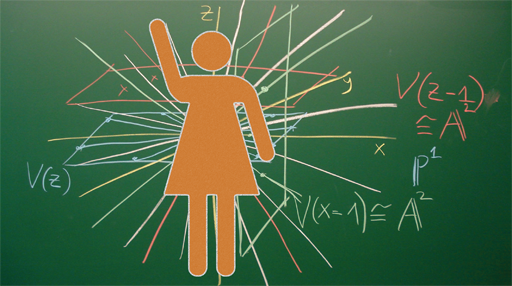1.8 Stereotypes contribute to barriers to participation
How do stereotypes contribute to barriers to participation for women in STEM subjects and careers? The presence of stereotypes in classrooms and schools seems to lead girls to be less interested in science as they get older and stereotypes keep those girls who are interested from pursuing their dreams. Stereotypes influence our actions through unconscious bias, which we’ll explore further in the next section.
Read the following excerpt from Equate, writing about experiences in Scottish education:
Despite boys and girls having an equal interest in science and technology, by the time girls enter their teen years their interest dramatically falls (regardless of the academic capability in science). Boys are more likely to pursue subjects such as physics, chemistry, engineering and computing. From the age of 15 young women have potentially limited their chances of working in STEM. This is because they are often stereotyped into making certain choices. For the few girls who do pursue subjects such as physics or chemistry it can be an isolating experience when they are potentially the only girl in the classroom, and it runs the risk of putting them off continuing with that subject. (Equate Scotland) [Tip: hold Ctrl and click a link to open it in a new tab. (Hide tip)]
Activity 13
How might gender stereotypes be evident in your classroom or the school environment? Consider the curriculum, activities and interactions and the school culture.
Discussion
- Curriculum: are any female scientists, engineers, mathematicians taught? Are there a wide range of different types of examples, case studies and problems that might appeal to different groups?
- Activities: are girls and boys given equal opportunity and encouragement to explore science, technology, mathematics and engineering activities? How do you know how often girls and boys participate in class or who teachers call on and give encouragement to?
- Culture: do teachers, pupils or parents talk about ‘girl subjects’ and ‘boy subjects’? Are gender stereotypes acknowledged and challenged? How are subject choices and career guidance provided?

How do we begin to address this? (Clue: girls aren’t the problem)
Initiatives that seek to ‘encourage’ girls into STEM are misplaced. The implication is that girls must change. Instead, the responsibility for closing the STEM gender gap should be placed on the people who have influence in our society and education system. Girls are treated differently from boys in the classroom and careers advice is far from inclusive. This separation of girls and young women from the mainstream is the fundamental roadblock (Science Grrl, The case for a gender lens in STEM).
The Institute of Physics has created a poster with top tips for inclusive science teaching. https://education.gov.scot/ improvement/ Documents/ sci38-tips-poster.pdf
Note down in your learning log your reflections about gender stereotypes and inclusive teaching in your classroom setting.
What are the gender demographics of STEM courses/activities in your school?
Is there anything about your practice in the classroom you want to reflect on?
1.7 Participation of women in STEM
